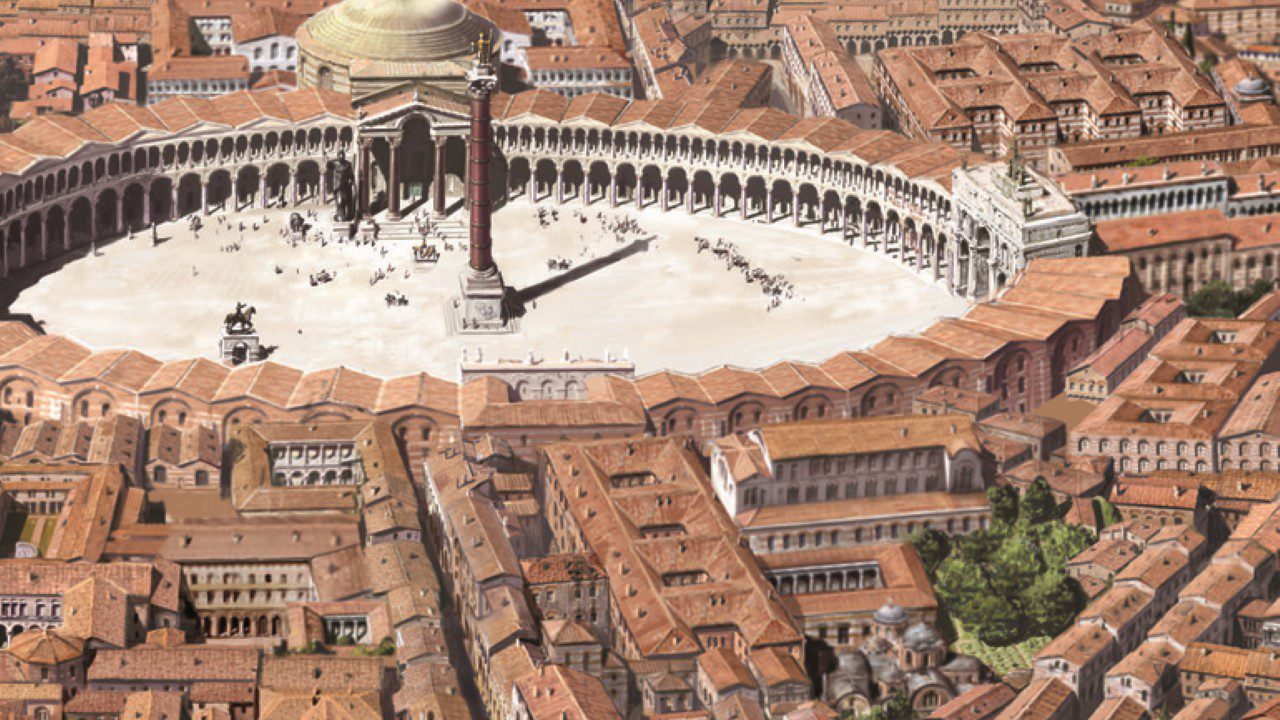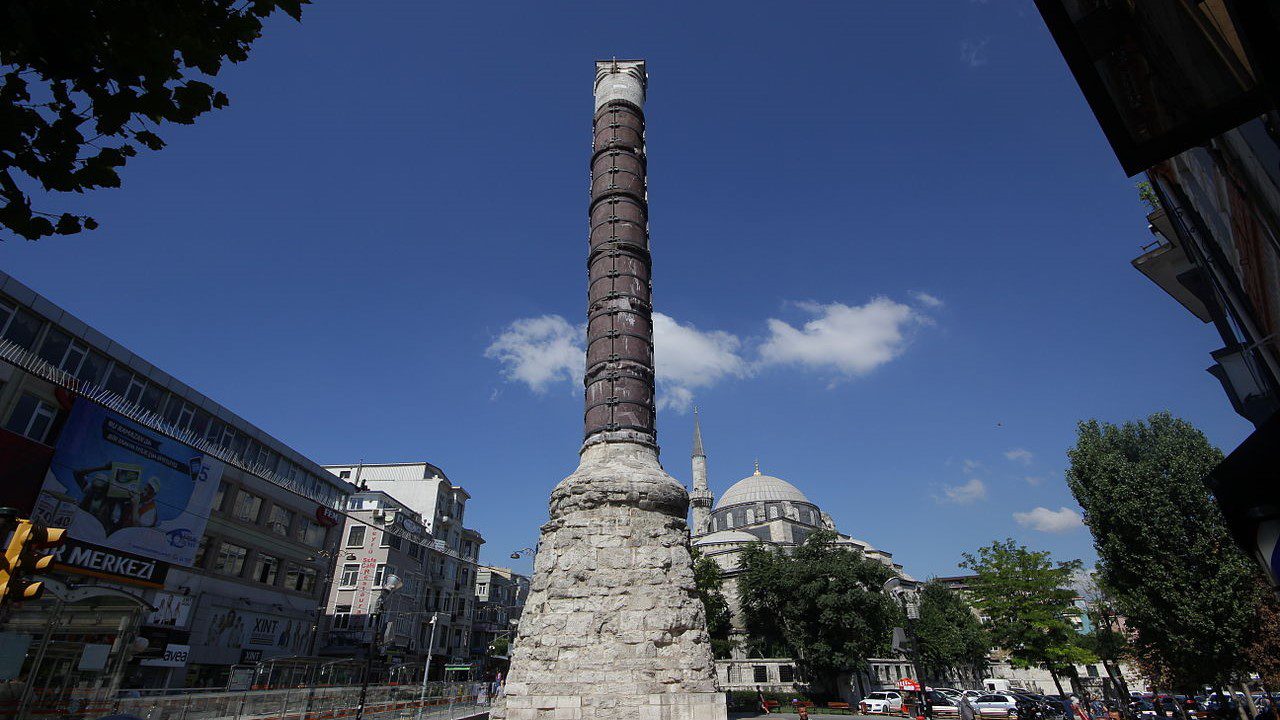Standing tall amidst the vibrant city of Istanbul is the Column of Constantine, an awe-inspiring monument that serves as a testament to the power and grandeur of the ancient Roman Empire. This majestic Column, also known as the Burnt Column or the Cemberlitas, holds an important place in history and is a remarkable architectural marvel. In this blog article, we will explore the rich history, architectural features, and cultural significance of the Column of Constantine, shedding light on its enduring legacy.
The Historical Significance of the Column of Constantine
This place was erected in the 4th century AD to commemorate Roman Emperor Constantine the Great’s victory in the Battle of Adrianople. It stands as a symbol of his military triumphs and his role in shaping the history of the Roman Empire. The Column was initially adorned with a statue of Constantine on top, which has since been lost to time. However, its historical importance remains intact.

Architectural Features and Design
The Column of Constantine stands at a height of approximately 35 meters and is composed of several massive cylindrical stone blocks. It is constructed using the drum construction technique, where individual stone drums are stacked on top of one another. The structure features intricate reliefs depicting scenes from the emperor’s military campaigns and victories. The architectural design showcases the exceptional craftsmanship and engineering prowess of the ancient Roman builders.
Cultural Significance and Symbolism
Beyond its historical and architectural significance, the Column of Constantine holds immense cultural importance. It links to the past, connecting present-day Istanbul with its ancient roots. The Column represents the Roman Empire’s enduring legacy and influence on the region. It has become a symbol of pride for the city and a testament to its rich historical heritage.

Conservation Efforts and Preservation
Preserving Constantine’s Column is paramount to safeguarding its historical and cultural value. Over the years, restoration and conservation efforts have been undertaken to maintain the Column’s structural integrity. These initiatives involve cleaning, repairing damaged sections, and protecting the relief from environmental factors. By preserving this architectural masterpiece, future generations can continue to appreciate and learn from its historical significance.
Visiting the Column of Constantine: Practical Information
If you plan to visit the Column of Constantine, it is conveniently located in the historic Sultanahmet district of Istanbul, making it easily accessible to tourists. The Column stands near other notable landmarks, such as the Hagia Sophia and the Blue Mosque, allowing visitors to explore multiple attractions in one trip. It’s advisable to check the local regulations and opening hours before your visit to ensure a smooth and enjoyable experience.

Column of Constantine FAQs:
What is the historical significance of the Column of Constantine?
The Column of Constantine commemorates the victory of Roman Emperor Constantine the Great in the Battle of Adrianople and represents his military achievements.
What architectural features can be found in the Column of Constantine?
The column features intricate reliefs depicting scenes from Constantine's military campaigns, showcasing exceptional craftsmanship and engineering skills.
Why is the Column of Constantine culturally significant?
The column connects present-day Istanbul with its ancient Roman roots, representing the enduring legacy of the Roman Empire and serving as a symbol of the city's historical heritage.
What conservation efforts have been made to preserve the Column of Constantine?
Restoration and conservation initiatives have been undertaken to maintain the structural integrity of the column, including cleaning, repairs, and protection of the reliefs.
Where is the Column of Constantine located?
The column is situated in the historic Sultanahmet district of Istanbul, close to famous landmarks such as the Hagia Sophia and the Blue Mosque.



0 Comment